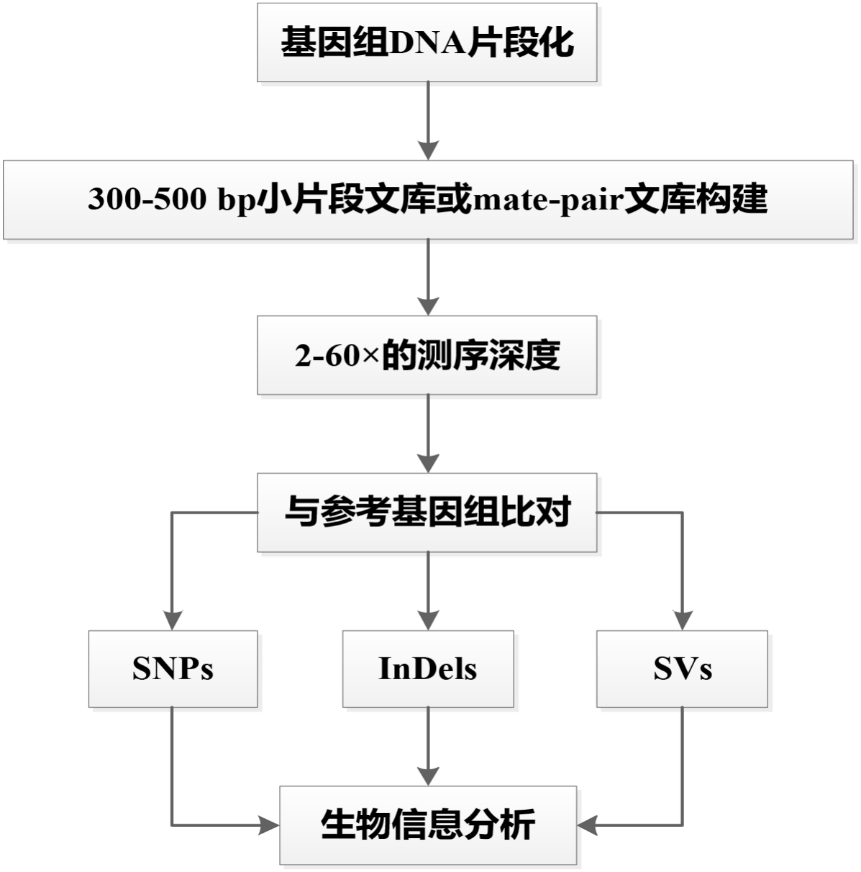Service introduction
With the significant reduction in the cost of high-throughput sequencing and the significant improvement in sequencing efficiency, whole-genome resequencing has become a common method for finding variants. Resequencing is the full-genome sequencing of different individuals or different tissues of a species with a known genome. By comparing with the reference genome, the sequence information of the individual genome can be obtained, and the various variant information with the reference genome, such as SNP, InDel, SV, and CNV, can be obtained. This is of great significance for obtaining the pathogenic genes of genetic variation, understanding population genetics, the evolutionary process of species, and natural selection.
Technical procedures
The genomic DNA is randomly fragmented by physical methods, and then recovered according to the fragment size required for library construction. The small-fragment sequencing library is constructed using the standard Illumina library construction process, and sequencing is performed in the 150PE mode. The overall sequencing depth is 30×, but the sequencing depth can be adjusted according to different experimental sequencing requirements.

Bioinformatics analysis

Sample requirements
实验类型 | DNA样品总量 | 样品浓度和纯度 | 样品保存 | 样品选择 |
动植物基因组重测序 | ≥1 μg | 样品浓度 >50 ng/μl,OD260/280 介于 1.8-2.0 之间,无肉眼可见杂质污染,基因组完整、无降解,电泳中 DNA 主带应大于 23 kb | 请选择干粉、酒精、TE 或超纯水的保存方式 | 对于植物样品建议选取黑暗培养的黄化苗或嫩苗,动物样品应选择肌肉、血等脂肪含量较少的组织进行取样 |

